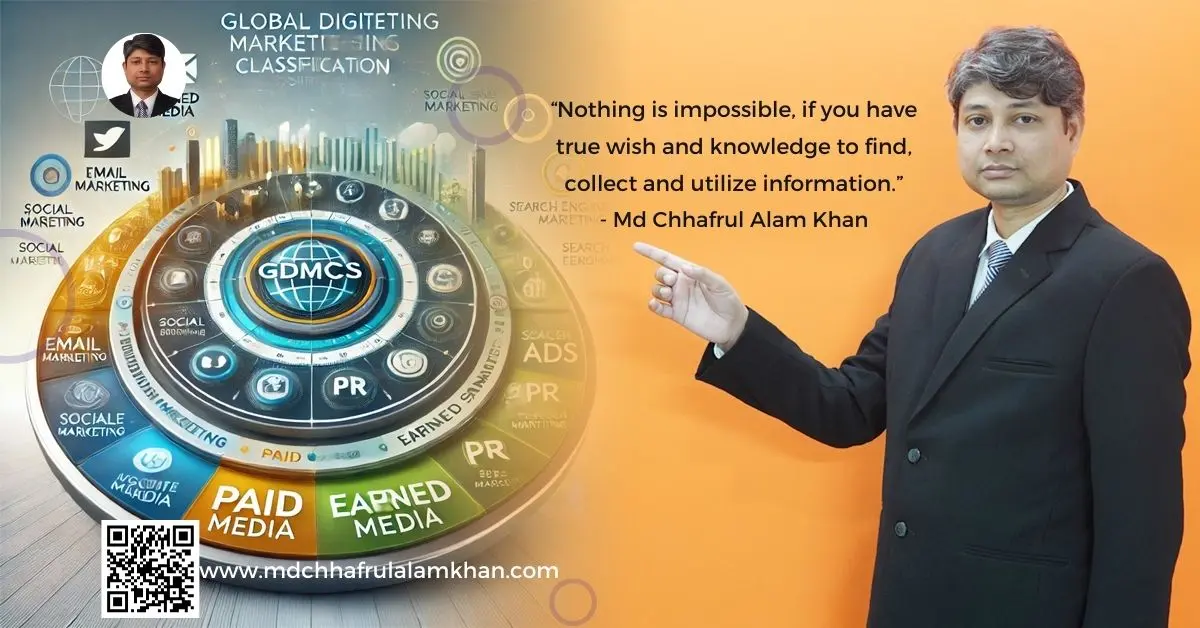In the evolving world of digital marketing, keeping pace with best practices and maintaining consistency across campaigns can be challenging. The Global Digital Marketing Channels Classification Standard (GDMCCS) serves as a foundational framework to classify, organize, and understand the diverse range of digital marketing channels in a systematic and unified way. Whether you’re a beginner, a seasoned marketer, or a strategist working to align teams and campaigns, this guide will help you unlock the potential of the GDMCCS.
What is the Global Digital Marketing Channels Classification Standard?
The Global Digital Marketing Channels Classification Standard (GDMCCS) is a formalized system that categorizes and standardizes digital marketing channels. It provides a universal framework to:
- Clearly identify and differentiate marketing channels.
- Streamline marketing strategies, measurement, and communication across teams.
- Ensure consistency and accuracy in digital marketing analytics and reporting.
Context and Examples
For example, GDMCCS helps marketers distinguish between Owned Media (e.g., a brand’s blog or email newsletter), Paid Media (e.g., search engine ads or social media promotions), and Earned Media (e.g., customer reviews or PR mentions). It allows for accurate tracking of where efforts are invested and how results are achieved.
By aligning with this standard, organizations can achieve better communication between departments, clear reporting for stakeholders, and improved insights for optimizing their digital strategies.
Who Should Care About GDMCCS?
Target Audience
The GDMCCS is vital for a range of professionals in the digital marketing ecosystem:
- Digital Marketing Professionals: To create cohesive campaigns and improve performance tracking.
- Data Analysts: For consistent reporting across multiple digital channels.
- C-Suite Executives: To understand where marketing budgets are being spent and ensure alignment with business objectives.
- Small Business Owners: To effectively manage limited resources and prioritize the most impactful marketing channels.
- Students and Beginners: To build foundational knowledge in digital marketing strategy and reporting.
No matter the role, anyone involved in planning, executing, or evaluating digital marketing campaigns benefits from a clearer understanding of GDMCCS.
How Can You Apply GDMCCS in Real Life?
1. Campaign Planning and Execution
- Organized Channel Segmentation: Break down campaigns into distinct categories like organic search, display advertising, and email marketing, ensuring focus and clarity.
- Holistic Strategy Alignment: Understand how each channel contributes to overall goals, preventing resource overlap or underutilization.
2. Analytics and Reporting
- Accurate Attribution: Use the standard to ensure consistent attribution of traffic, conversions, and ROI across all marketing channels.
- Cross-Team Communication: With a common language, teams can avoid miscommunication about where campaigns or budgets are focused.
3. Budget Allocation
- Informed Decision-Making: Knowing the performance of each classified channel can guide smarter investment decisions.
- Comparative Analysis: Benchmark performance across channels to identify trends and optimize resources.
Why is Understanding GDMCCS Relevant Today?
1. A Growing Complexity in Digital Channels
The rapid expansion of digital platforms means marketers need a way to stay organized. The GDMCCS provides a structure to keep track of emerging channels, such as voice search advertising or AI-driven programmatic ads.
2. The Importance of Data-Driven Decision Making
In the age of big data, standardization ensures that data from various platforms can be aggregated and analyzed efficiently, leading to more reliable insights.
3. Global Collaboration
With businesses increasingly operating across borders, a standardized classification system enables seamless collaboration among international teams and stakeholders.
Exploring All Aspects of GDMCCS
Key Categories and Channels
- Owned Media
- Website
- Email Marketing
- Mobile Apps
- Paid Media
- Search Engine Marketing (SEM)
- Social Media Ads
- Programmatic Advertising
- Earned Media
- Social Media Shares
- PR Mentions
- Online Reviews
Emerging Trends
- Influencer Partnerships: Understanding where influencer efforts align within Earned or Paid Media.
- AI in Marketing: Automation tools are reshaping how Paid Media campaigns are managed.
- Sustainability in Digital: Eco-conscious consumers are influencing the evolution of channels like sustainable advertising practices.
Key Takeaways
- The GDMCCS ensures a unified, consistent approach to understanding and leveraging digital marketing channels.
- It empowers professionals at all levels to make data-driven decisions and optimize marketing strategies.
- Emerging trends, like AI and sustainability, highlight the need to continually adapt the classification system.
FAQs
1. What makes GDMCCS different from other frameworks?
It offers a universal language for all marketing stakeholders, ensuring consistency and reducing ambiguities across global teams.
2. Can small businesses benefit from GDMCCS?
Absolutely. It helps small businesses prioritize and manage resources effectively by focusing on the most impactful channels.
3. How do I start implementing GDMCCS?
Begin by mapping your current marketing efforts to the standard classifications. Then, align your analytics and reporting systems with these categories.
Next Steps and Future Directions
- For Beginners: Explore foundational courses or certifications in digital marketing.
- For Professionals: Audit your current campaigns and assess alignment with GDMCCS.
- Future Trends: Stay informed about emerging channels like metaverse marketing or conversational AI.
As digital marketing evolves, so will the GDMCCS, ensuring marketers remain equipped to handle new challenges and opportunities.
Conclusion
The Global Digital Marketing Channels Classification Standard is more than just a framework; it’s a roadmap for navigating the complexities of digital marketing. Whether you’re optimizing campaigns, allocating budgets, or analyzing results, this standard ensures clarity, consistency, and success. Embracing GDMCCS is not just about keeping pace; it’s about staying ahead in the dynamic digital landscape.
Start implementing the standard today to elevate your marketing strategies and achieve greater impact.

Leave a Reply